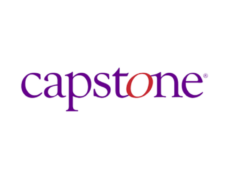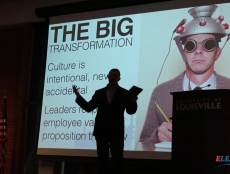
Articles
Inmate eLearning for Post-Incarceration Employment in the Gig Economy
By Sherman Morrison
September 12, 2019
There was a recent press release posted on Yahoo! Finance about a partnership between corrections technology company GTL and vocational training company VirtualiaNet. The joint project could bring skills training to inmates across the nation in the form of eLearning to become freelancers in the rising gig economy. Although this story didn’t make a big splash in the media, it could be a real game-changer for millions of people. In fact, inmate eLearning could be the source of a whole new wave of skilled workers desperately needed in today’s increasingly tight labor market.
Making the Connection Between Mass Incarceration and Employment
According to the most recent Mass Incarceration report from the non-profit, non-partisan Prison Policy Initiative, the criminal justice system holds nearly 2.3 million people in 3,163 local jails, 1,719 state prisons, 109 federal prisons and a variety of other detention facilities. Yes, that is a lot of people. But consider also that, at any given moment, there are 4.5 million people under the supervision of community corrections, meaning they are on probation or parole for some period of time after being released from incarceration (this can range from months to years).
The 4.5 million on probation and parole represents a pool of people trying to transition back into society post-incarceration. One of the biggest challenges faced by this population is securing gainful employment. Phil Alfaro, Cofounder of VirtualiaNet, notes that studies have shown how even more than year after being released from jail or prison, more than 60% of former inmates remain unemployed.
It’s easy to paint this population with a very broad brush. After all, what company wants to hire a criminal, right? This is why many companies still ask about a person’s criminal record on their employment applications. But many see this as an unfair disadvantage to people who have served the time for their crime and are trying to find their way back into society. Their applications are routinely tossed out in the very first stage of screening without any consideration that they may be perfectly qualified and able to do the job, which may have nothing at all to do with whatever landed them in jail or prison.
In reaction to this perception of discrimination, there has been a growing “ban the box” movement where companies voluntarily remove questions about criminal records on their employment applications. If a candidate advances into the final rounds of a recruiting and hiring process, there will likely be a background check that will reveal their criminal record, and that is the point at which a company can make an informed decision about whether or not to pursue an offer of employment with that candidate.
Former president Barack Obama recognized the difficulty faced by these millions of people who can’t even get their foot in the door of the economy in spite of having officially paid their debt to society. His administration responded by launching the Fair Chance Business Pledge. In addition to banning the box, companies taking this pledge “are committed to providing individuals with criminal records, including formerly incarcerated individuals, a fair chance to participate in the American economy.”
While these efforts are laudable, it’s unclear what real impact, if any, they are having on the employment prospects of the millions of people with criminal records who are trying to find work. But what if there were a way to bypass all of that? This is the promise and potential of the GTL/VirtualiaNet partnership for inmate eLearning mentioned at the outset of this article.
The Gig Economy, Freelancing, and Inmate eLearning
There are now dozens of freelancing websites that connect people with particular skills to companies who need project work completed utilizing those skills. Sites like Upwork, Freelancer, Project4Hire, peopleperhour, Simply Hired, Fiverr, and many more collectively post thousands of jobs. People get hired based on their ability to do the work and write a compelling bid for a project. Most include freelancer profiles to explain your skills and a portfolio area to showcase previous work.
The distinct advantage of freelancing in the gig economy is that there is no box to check if you have a criminal record. The hiring company typically doesn’t care about criminal records, they just want to know if you can produce quality work. After all, in the vast majority of freelancing gigs obtained online, everything will happen in the online environment. The freelancer will never meet the hiring company in person or ever spend time there. It’s naturally a more level playing field where former inmates could have a shot at gainful employment without the stigma and discrimination associated with having a criminal record.
The challenge, of course, is whether or not the formerly incarcerated have the skills that are most in demand in the growing gig economy. And this is why GTL and VirtualiaNet want to bring inmate eLearning to prisons and jails across the nation. The VirtualiaNet course package includes nine different modules, each geared towards a different kind of digital job. They include transcriber, translator, customer support, virtual assistant, web content, social media manager, web designer, online advertising manager, and your own product or service. Participants can receive training in all nine vocations over the span of 90 days, and the goal is to reach a sustainable level of income within six months. That’s ambitious, but possible.
Is Corrections Ready for Inmate eLearning?
While the approach being taken in the GTL/VirtualiaNet partnership could be a game-changer for millions of presently and formerly incarcerate people, there is a major stumbling block that has to be dealt with. It’s hidden away in the following quote from the press release:
“GTL is working to help inmates access this growing employment trend by offering VirtualiaNet coursework on its Learning Management System (LMS); the backbone of GTL’s education solution portfolio – delivering educational content for those inmates with the opportunity to access solutions.”
The key phrase is at the end of the quote: “…for those inmates with the opportunity to access solutions.” People serving longer sentences in state and federal prisons may or may not have various options available to them in terms of career development. But the quality and availability of offerings varies widely. It’s a much bleaker picture for people incarcerated in local and county jails, many of which have strict policies prohibiting inmates from ever using computers or accessing the internet for any reason.
What’s behind this varying access to devices and the internet? At its root is the core philosophy behind corrections. Should it be retributive or restorative? When corrections broadly or at specific facilities is constructed as a way to punish, to exact retribution for a crime committed, less attention is paid to what support and programming is needed for inmates to improve their post-incarceration prospects for employment and a more successful life. The result can be repeat offenders who get stuck in a vicious cycle of incarceration. If, however, there is a strong restorative and/or rehabilitative component to corrections, then more is done to ensure a smoother post-incarceration transition back into the community and society by providing opportunities for self-development and skills training.
I mentioned at the beginning of this article how the GTL/VirtualiaNet partnership could be a game-changer for those under the supervision of the corrections industry. But what would it take to make this come about? The answer is nothing short of a major shift in corrections, as well as society at large, toward a more rehabilitative and restorative framework that sees the merits of providing self-development programming and skills training for inmates. Until that shift gains more traction, inmate eLearning will remain little more than a good idea whose time ought to come.
Featured Image: Emiliano Bar, Unsplash.









No Comments